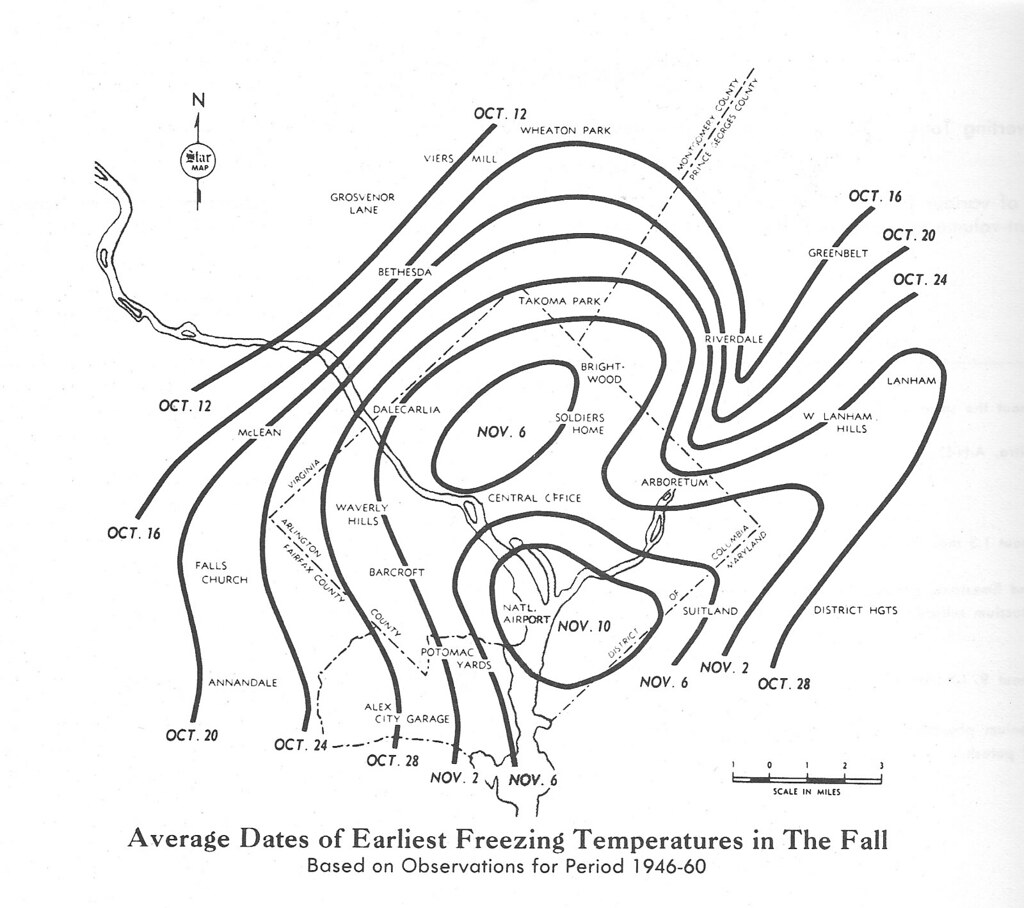But downtown DC actually tends to freeze even later. In fact, we were sad to note that we lost almost a week off the end of our growing season just by moving from Dupont Circle to Silver Spring. This map, taken from The Washington Star Garden Book: The Encyclopedia of Gardening for the Chesapeake & Potomac Region

What's going on in this picture? Two things: topography and urbanity. The area by National Airport, where the Potomac and the Anacostia meet, is the lowest-lying area in Washington, DC, and it freezes later than anywhere else in the metro area. The other oval on the map corresponds roughly with the Rock Creek valley.
Other than these river valleys, though, there's something else going on. There are circles radiating out from DC not just because of altitude, but also because there is a higher density of buildings and pavement in downtown DC. And those create what's known as an "urban heat island," trapping heat. It's enough to change the weather.
Folks worried about global warming think one way to slow down climate change is to address some of the factors that create urban heat islands. For one, street trees can keep the sun off of pavement, so that it doesn't heat up as much. Likewise, green roofs and highly reflective roofs can keep buildings from absorbing so much heat.
In the meantime, you can observe the subtle differences in nature that stem from these temperature differences. Do the trees drop their leaves a little later in one place vs. another? Do flowers last longer in the fall or come up earlier in the spring? Keep an eye out, and let us know what you see.
Thanks to Flickr user DCTropics for the map!


